Setsubun is a traditional event that takes place in early February in Japan.
On Setsubun, Japanese people have the custom of throwing roasted soybeans and eating large Sushi rolls.
So what is the meaning of these customs?
Specifically, what day will Setsubun take place?
Let’s find the answer through this article!
What is Setsubun?
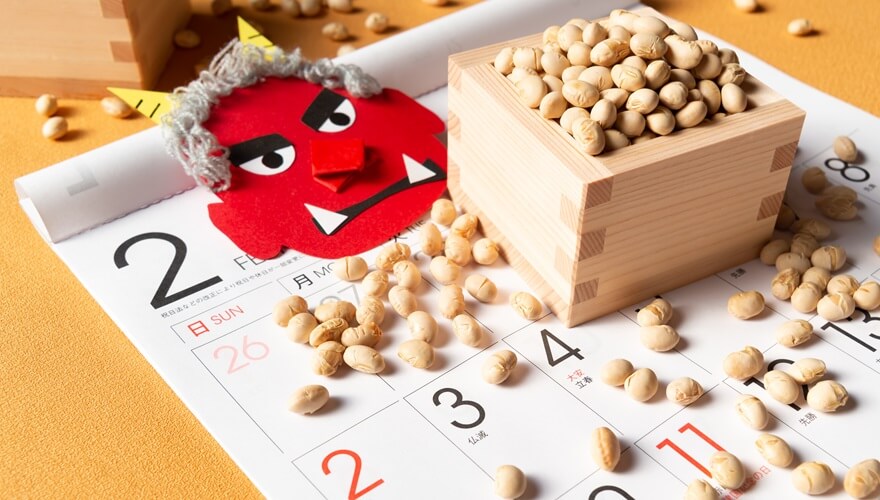
Setsubun (節分) literally means “the division between the seasons”, referring to the last day before spring, summer, autumn and winter according to the Japanese lunar calendar.
Actually, there are 4 Setsubun days in a year. However, in Japan, spring is considered the most important, so when saying “Setsubun” it means “the day before the beginning of spring”.
If spring is considered the beginning of the New Year, then Setsubun means New Year’s Eve.
On this day, traditional customs are performed to ward off bad luck and wish for happiness for the new year.
Because it is based on the lunar calendar, Setsubun changes depending on the year, usually falling on February 2, 3 or 4.
This year’s Setsubun will be on February 3, 2024.
Traditional customs during the Setsubun festival
Throwing beans to exorcise demons (Mamemaki)
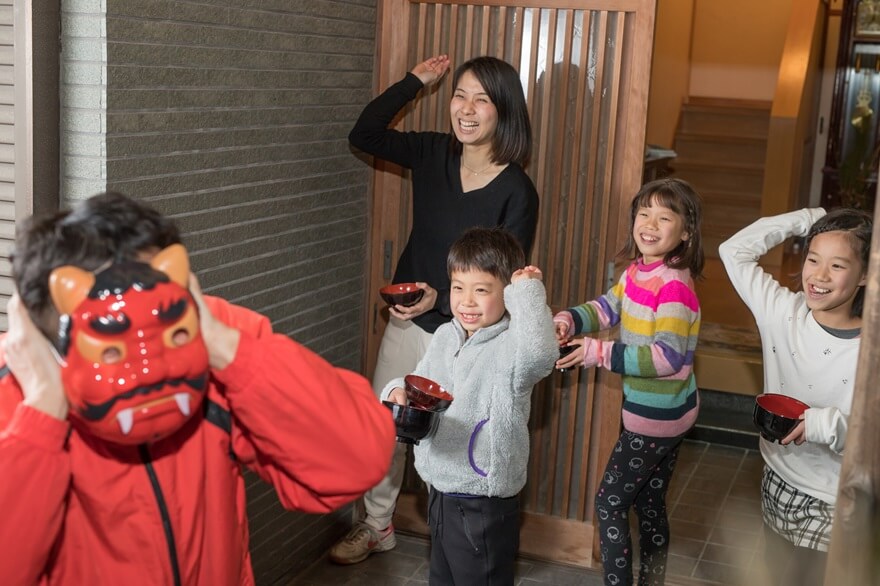
The most popular custom on Setsubun day is “Mamemaki” (豆まき), which means “throwing beans”.
The beans thrown are roasted soybeans, because the ancient Japanese believed that soybeans contained spiritual power to help ward off disease and misfortune.
On Setsubun day, people throw roasted soybeans while saying “Oni wa soto! Fuku wa uchi!” (“鬼は外! 福は内!”, meaning: “Demons go out! Good fortune enters the house!”).
In families with children, to create joy and cultural education for the children, the father or mother will play the devil and let the remaining members throw beans at them.
In fact, people often throw small bags of beans instead of throwing beans directly because the beans will be picked up and eaten after being thrown.
Each person will eat the number of beans equal to their age plus one bean, hoping to be lucky next year.
Eating Sushi Rolls (Ehōmaki)
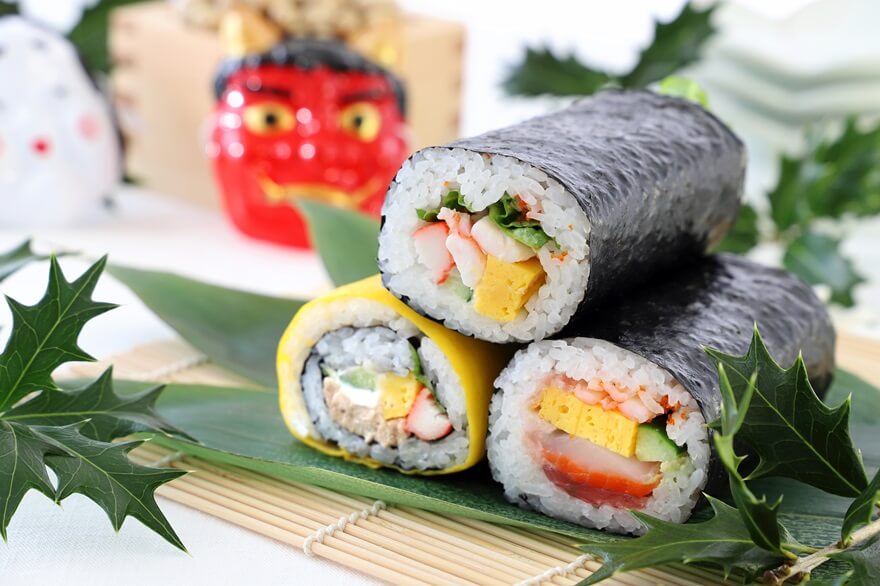
Another popular custom is eating Ehōmaki (恵方巻) – a type of Sushi reserved for Setsubun day.
Ehōmaki is a type of rolled sushi, with the ingredients in the middle, followed by rice, and wrapped in seaweed on the outside.
There are no specific regulations on ingredients, but it usually includes 7 ingredients that represent the Seven Lucky Gods in Japanese folk culture.
The interesting point of Ehōmaki is not only in the ingredients and appearance, but also in the unique way of eating.
- Do not cut into small pieces, but leave the whole roll intact, because cutting the rice roll means cutting away good luck.
- While eating, look at the lucky direction of the year. It is the east-northeast in 2024 (75 degrees).
- Eat in silence until the rice roll is finished, because talking while eating will make your luck go away.
The way to eat Ehōmaki may seem superstitious, but it is a very cute superstition of the Japanese.
Hanging the head of sardine and holly leaves (Hiiragi Iwashi)
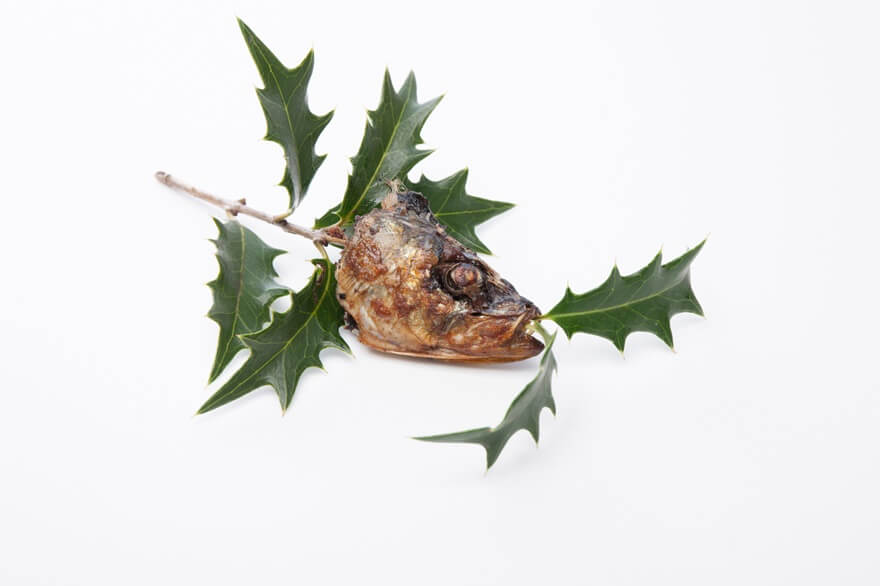
Not as popular as the custom of throwing beans (Mamemaki) and eating rolled sushi (Ehōmaki), but in some localities in Japan, people still keep the custom of hanging a decoration consisting of grilled sardine heads and holly leaves in front of their house door on Setsubun day.
This decoration is called Hiiragi Iwashi (柊鰯).
The ancient Japanese believed that demons hated the smell of sardines and they were also afraid of the thorns of holly leaves piercing their eyes, so by hanging Hiiragi Iwashi in front of the house, demons would not be able to enter.
In cities and apartment buildings, instead of hanging sardine heads outside, people often cook dishes using sardines to both avoid causing odors to neighbors’ houses and enjoy the traditional atmosphere on Setsubun day.
Top 7 famous places for Setsubun festival in Japan
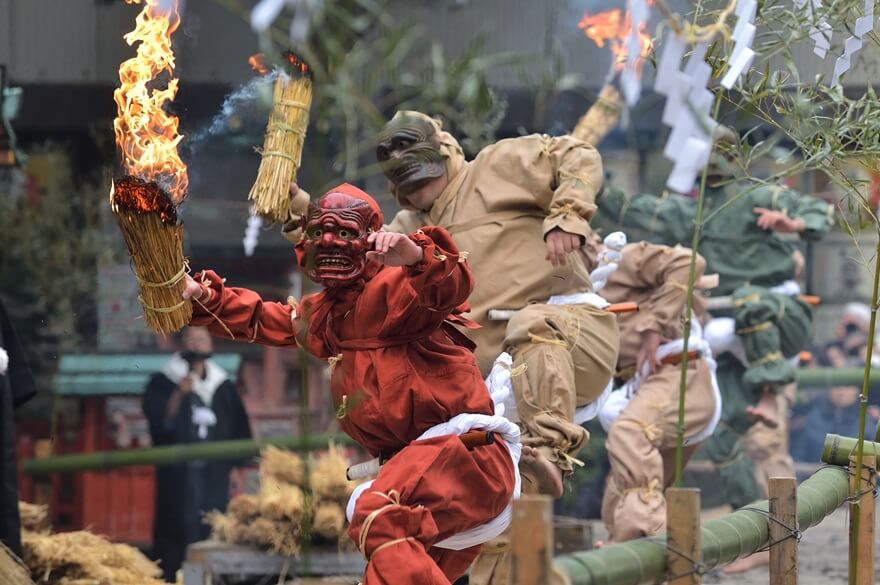
On Setsubun day, many temples and shrines across Japan often hold festivals to celebrate.
At large temples, the festive atmosphere is even more jubilant thanks to the presence of Sumō wrestlers and famous artists.
Below are 7 suggested locations for those who want to experience the Setsubun festival in the most interesting way.
1. Chūsonji Temple (中尊寺) / Iwate Prefecture
The bean throwing event was performed by Sumō wrestlers.
Setsubun is also the only time of year when you can buy the Mametsu Daishi (魔滅大師) amulet, which is said to be very powerful in protecting against difficulties and helping overcome challenges.
Homepage: https://www.chusonji.or.jp/index.html
2. Naritasan Shinshōji Temple (成田山新勝寺) / Chiba Prefecture
The festival is truly grand with the participation of Sumō wrestlers and the cast of historical dramas shown this year.
Homepage: https://www.naritasan.or.jp/
3. Sensōji Temple (浅草寺) / Capital Tōkyō
At the bean throwing event, instead of shouting “Oni wa soto!” (meaning: “Devil come out!”), people will shout “Senshū banzei! Fuku wa uchi!” (meaning “Hooray! Good fortune enters the house!”).
The reason is because people believe that demons cannot appear before Kannon.
Besides the bean throwing event, the performance “Fukuju-no-mai” (福聚の舞) – the dance of the Seven Lucky Gods, is also an attraction of the festival.
Homepage: https://www.senso-ji.jp/
4. Hakone Shrine (箱根神社) / Kanagawa Prefecture
You can enjoy a perfect play depicting the demon extermination scene. The most impressive was the water bean throwing event, where the devils escaped on water skis and had beans thrown from boats by people.
Homepage: https://hakonejinja.or.jp/
5. Naritasan Fudōson Temple (成田山不動尊) / Ōsaka Prefecture
A 150 meter long stage was built on the premises and in the center of the stage was the largest bean bin in Japan.
Naritasan Fudōson Temple is famous for its sacredness in traffic safety, so on Setsubun, transportation organizations also participate. There will also be the participation of famous politicians, businessmen and artists in the Kansai area.
Homepage: https://osaka-naritasan.or.jp/
6. Yasaka Shrine (八坂神社) / Kyōto Prefecture
Come to Yasaka Shrine during Setsubun to participate in a bean throwing event and enjoy traditional dances performed by beautiful Geishas.
Homepage: https://www.yasaka-jinja.or.jp/
7. Nagata Shrine (長田神社) / Hyōgo Prefecture
Famous for the ancient “Tsuinashiki” (追儺式) ritual performed by seven actors in demon costumes.
The seven demons, believed to be messengers of the gods, would burn misfortunes with torches, cut misfortunes with long swords, and dance to celebrate the return of spring.
Homepage: https://nagatajinja.jp/
Conclusion
Setsubun is the day before the beginning of spring according to the Japanese lunar calendar.
On Setsubun day, Japanese people have the custom of throwing roasted soybeans to ward off evil spirits and eating Ehōmaki to pray for happiness in the new year. In some localities, people also hang sardine heads and holly leaves in front of their houses to keep evil spirits from entering.
Shrines in Japan also often hold festivals to celebrate Setsubun.
Some places even feature Sumō wrestlers and famous artists.
This year’s Setsubun will fall on February 3, 2024.
If you are in Japan during this time, definitely join the festival.


Comment